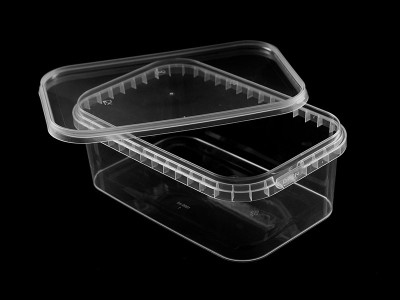Increasingly, concerns about the impact of microplastics on health and nature are being heard in the media, leading some to make decisions in the name of sustainability and a greener lifestyle to reduce or eliminate the consumption of plastic containers and products packaged in plastic. However, is plastic packaging really as bad as it's painted, and what does science say about this issue? Read on to find out.
What is plastic, really?
Plastic packaging, polypropylene containers, disposable bags, and other plastic products are an integral part of modern human life. They are made from fossil fuels, and it is estimated that about 4% of the world's oil production is used as raw material for plastic manufacturing. Because of its association with oil, plastic is often considered bad in terms of renewability and sustainability. However, fundamentally, plastic is very similar to some of our favorite things in nature. Plastic, like collagen, cellulose, cotton, wool, and silk, as well as milk proteins, casein, and even our DNA, is made up of polymers. When scientists discovered how to make synthetic polymers a few decades ago, it led to a technological revolution that resulted in remarkable inventions and improved quality of life for people. Plastic pipes provide clean drinking water, insulation allows electricity to be delivered, not to mention modern medicine, which is unthinkable without the majority of plastic products. However, the rapid popularity and spread of this material have caused concern among "environmental advocates". Since most food products are packaged in plastic containers and plastic packaging, concerns about the impact of microplastics (plastic particles ranging in size from 1μm to 5mm) on health are increasingly being raised. Some articles claim that microplastics are harmful and release toxic substances, but none of these claims have any credible scientific evidence.
Current negative opinions are not based on evidence
There is no doubt that plastic can be harmful, but it's not that simple. Dr. Chris DeArmitt, president of Phantom Plastics, author of "The Plastics Paradox" and one of the world's leading scientists in the field of plastics, has said that plastic often has an unfairly negative image and society worries too much about microplastics. One reason people criticize plastic is the belief that we use too much of it and need to reduce it. It's true that modern lifestyles are wasteful and we should reduce the use of various materials and natural resources. However, plastic accounts for only 1% of the total amount of resources used and only 13% of all waste globally. Looking at the life cycle analysis of various materials, it turns out that in more than 90% of cases, plastic causes the least harm. Studies show that plastic is a much better choice than cotton, metal, glass, and paper, as much less plastic is needed for the same function compared to other materials. Moreover, plastic and plastic packaging, such as polypropylene containers, also reduce the total amount of waste and energy consumption because replacing them daily would create three or even four times more waste and consume more energy. Although scientists agree that plastic has no place in our nature, it's interesting that some studies have even confirmed the positive ability of microplastics to absorb toxins.
What can we learn from this?
It is important to understand that all living beings produce waste. Every breath we take leads to CO₂ emissions in the air. Anyone who has ever tried to hold their breath knows that it's impossible to avoid it. Civilization in its development has always created and will create new types of waste, and we must adapt to reduce it, just as we did with horse manure and smog in the past. One way to reduce plastic waste is to reuse plastic packaging, containers, and bags, thus extending the service life of the material. Another way is the sorting, recycling, and proper disposal of plastic packaging. As you can see, plastic packaging is not as bad as it's often portrayed, as long as it is used responsibly.


